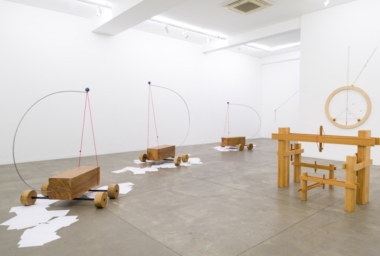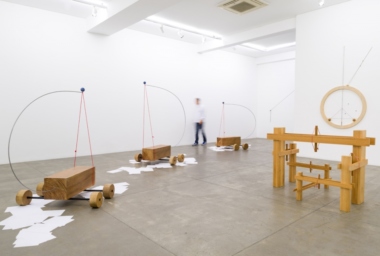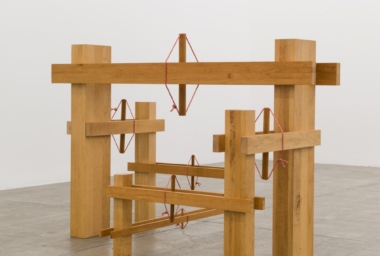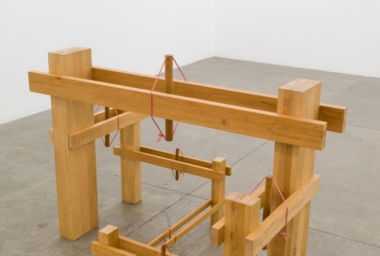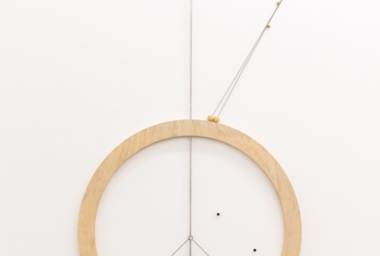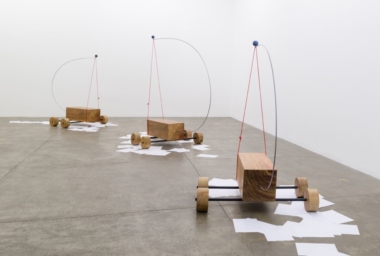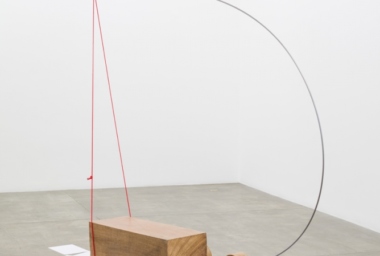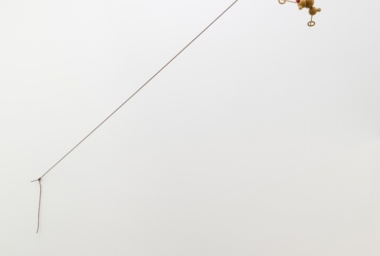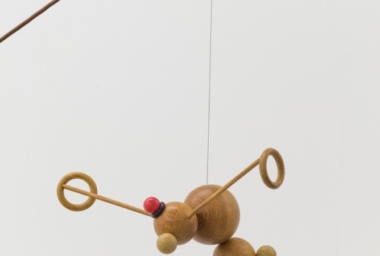Carlos Bevilacqua
Let it Go
May 21 – Jul 11, 2015
Opening
May 21, 7 pm–10 pm
Galeria Fortes Vilaça
Download
In his new exhibition at Galeria Fortes Vilaça, Carlos Bevilacqua presents four new works that reflect on the exercise of artistic practice, knowledge and memory. The sculptures in wood and steel possess a larger scale like never before in his career, revealing an interlinked system of symbolic relations.
Bevilacqua articulates elementary aspects of sculpture through syntheses where tension, balance and spatiality become latent questions. His research, however, is not purely formalist; it frames a platform for discussing themes that lie outside the realm of the rational, heading toward existentialism and metaphysics. In this sense, the title of the show, Let it Go, becomes a declaration of lightness, insofar as it points to the path of poetic perception.
The central work, O Inexorável Caminho do Saber [The Inexorable Path of Knowledge], consists of three pieces of wood on wheels, each with a carbon-steel arc rising into the space above it, constituting what the artist calls Veículos de Transcendência [Transcendence Vehicles]. They are aligned on a trail of blank pieces of paper, arranged randomly on the surface beneath them. Here the artist sketches out relations between writing and memory, based on Freud’s considerations in the article “A Note on the Mystic Writing Pad” (1925).
On the opposite wall, the work Geometria Muda [Mute Geometry] deals with rudimentary geometric shapes – point, line, circumference and triangle. Although motionless, these elements are ordered in the empty space in a way that suggests movement. It involves a continuous state of becoming, wherein the inert matter of the sculpture is subjected to an enigmatic tensioning.
In Ponte do Isolamento [Isolation Bridge], a complex structure of wood and nautical cords configures an endless bridge which does not connect one place to another; it only connects to itself. Two beams are suspended between two columns, tensioned in the middle by a piece of wood. This framework is transversely repeated in two other smaller bridges which, in turn, are connected by another smaller bridge. At the same time that it alludes to an eternal re-beginning, the work operates as a metaphor for loneliness.
Carlos Bevilacqua was born in 1965, in Rio de Janeiro, where he lives and works. His solo shows have most notably included exhibitions at the Museu de Arte Moderna do Rio de Janeiro (2000) and at the Museu de Arte Moderna de São Paulo (1992). His group shows have included participations in Desejo da forma, Akademie der Künste (Berlin, Germany, 2010) and Um Mundo Sem Molduras, MAC-USP (São Paulo, 2009). His work figures in important collections such as those of Instituto Inhotim (Brumadinho), MAM Rio de Janeiro, MAC-USP (São Paulo), and others. A catalog of the exhibition will be released this year with a text by Dutch curator Carolyn Drake.
